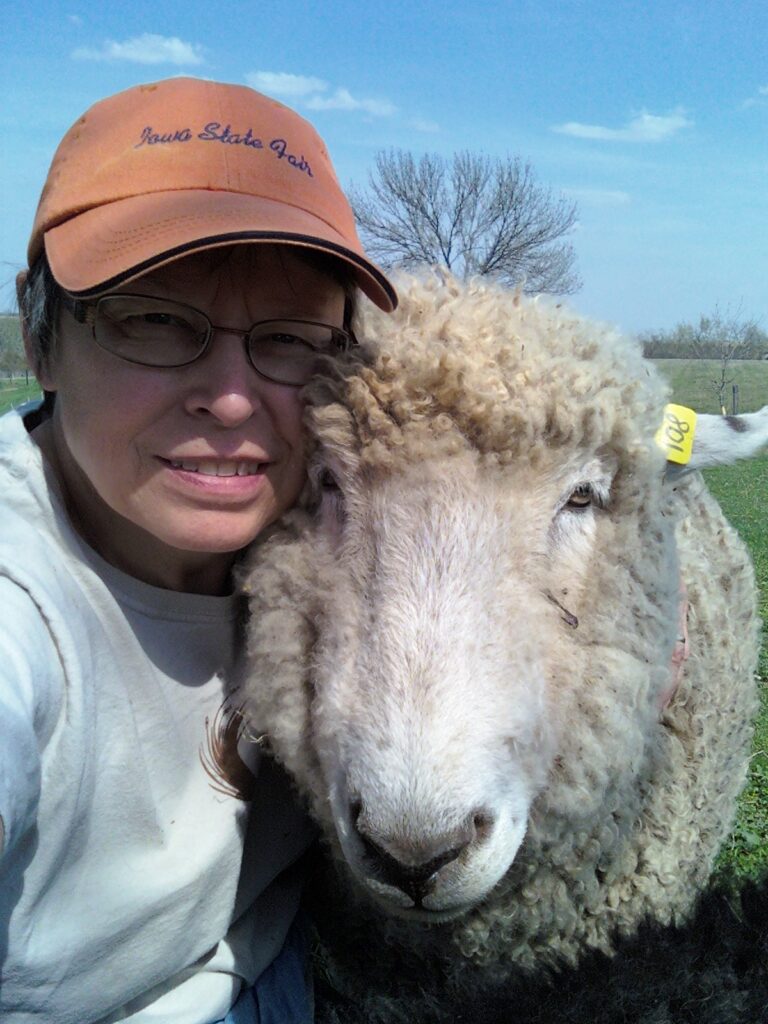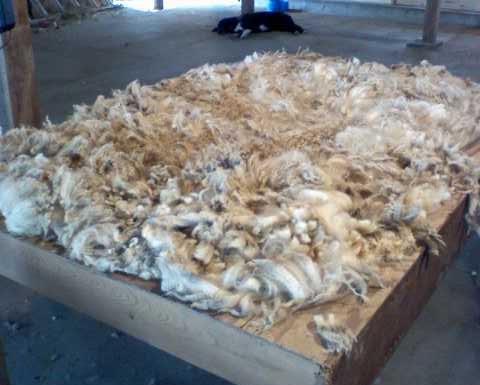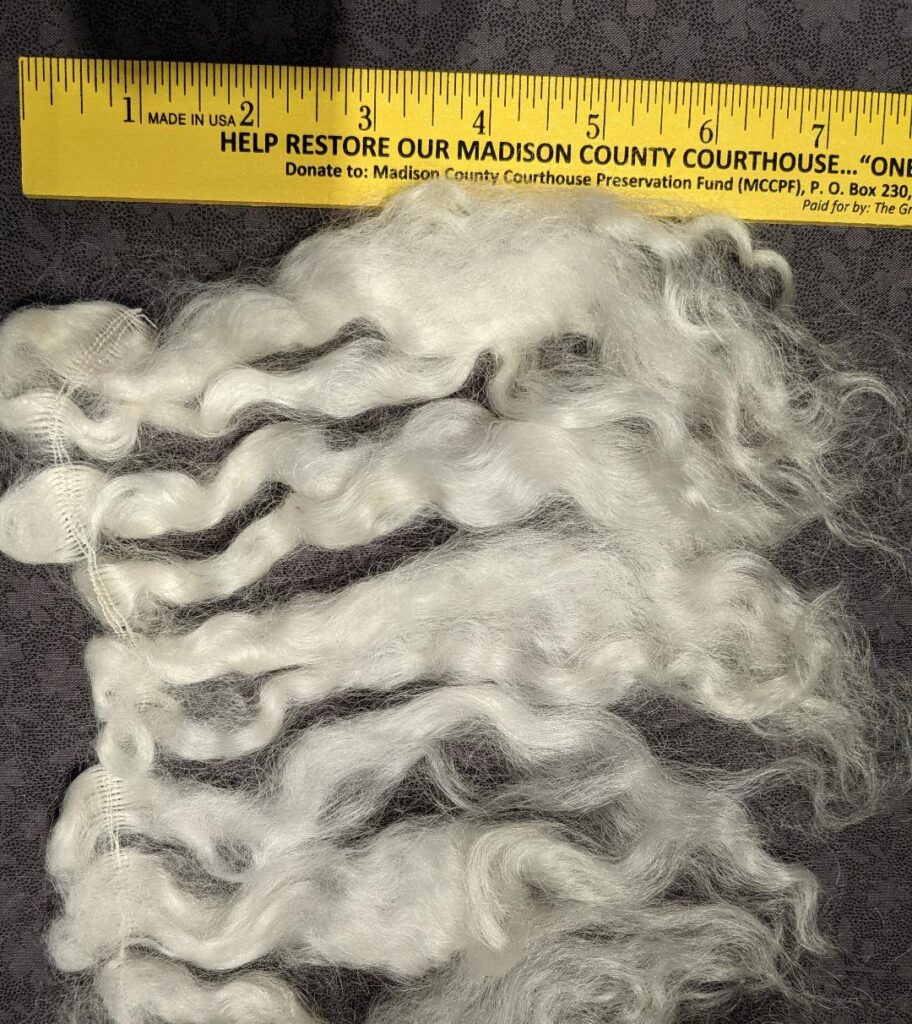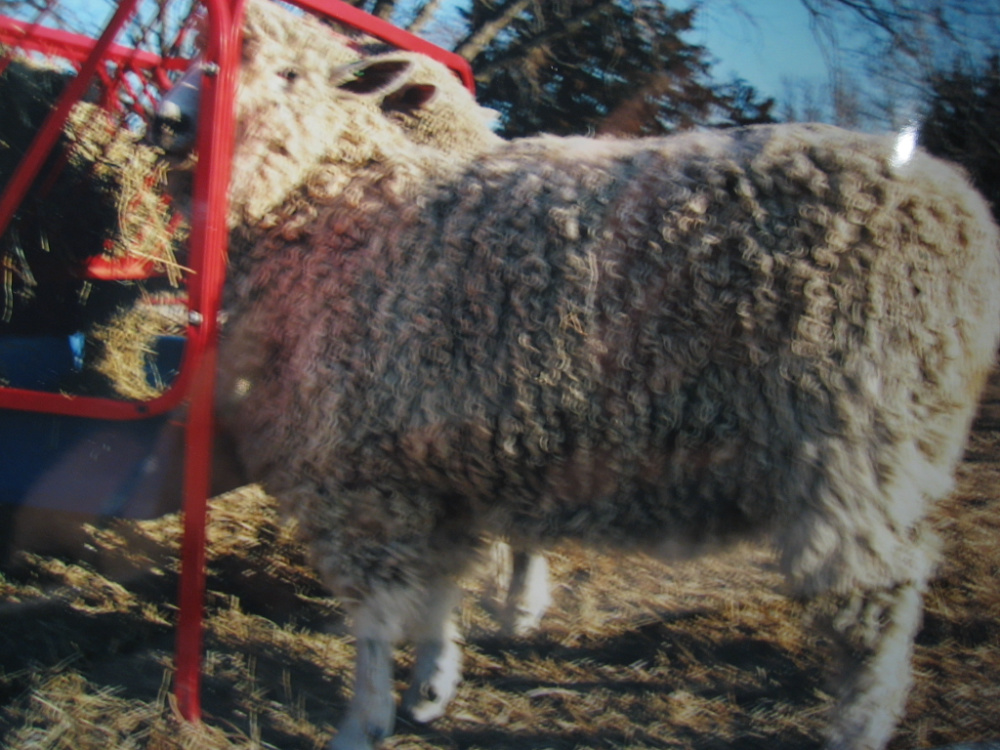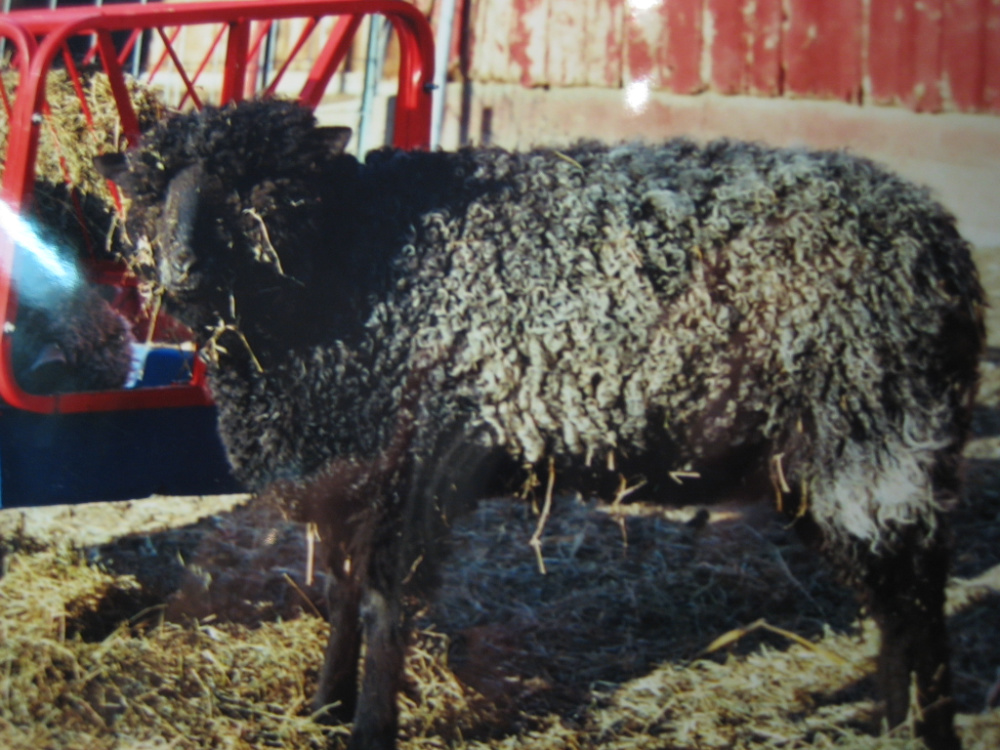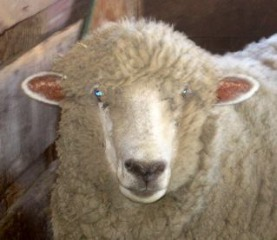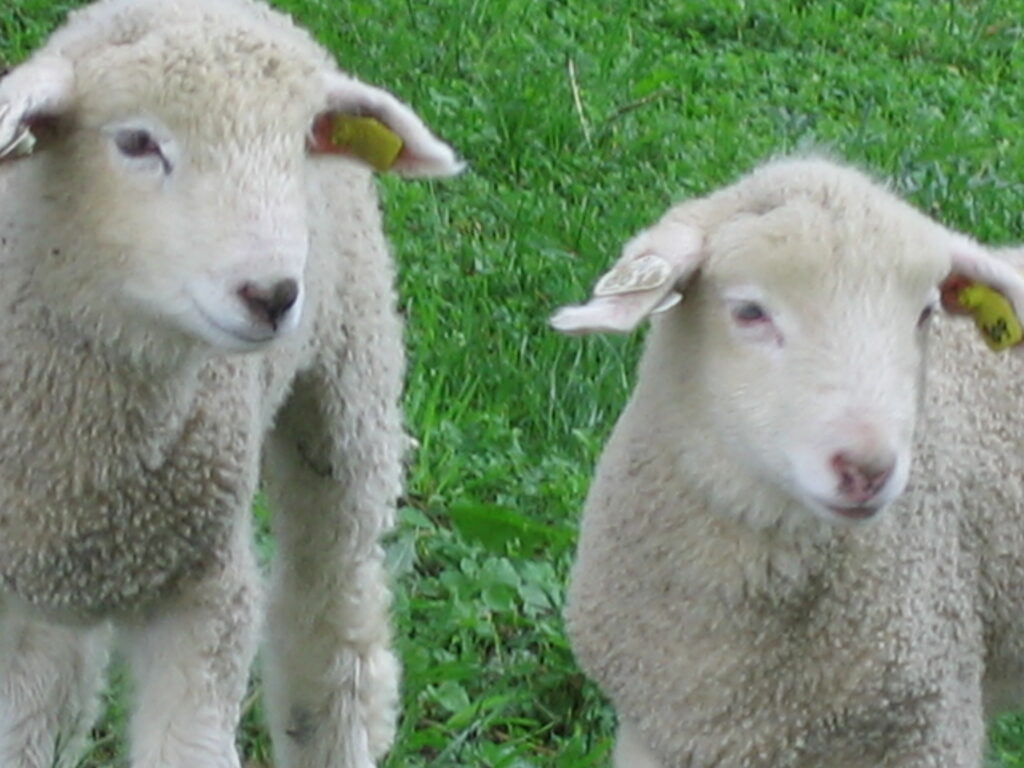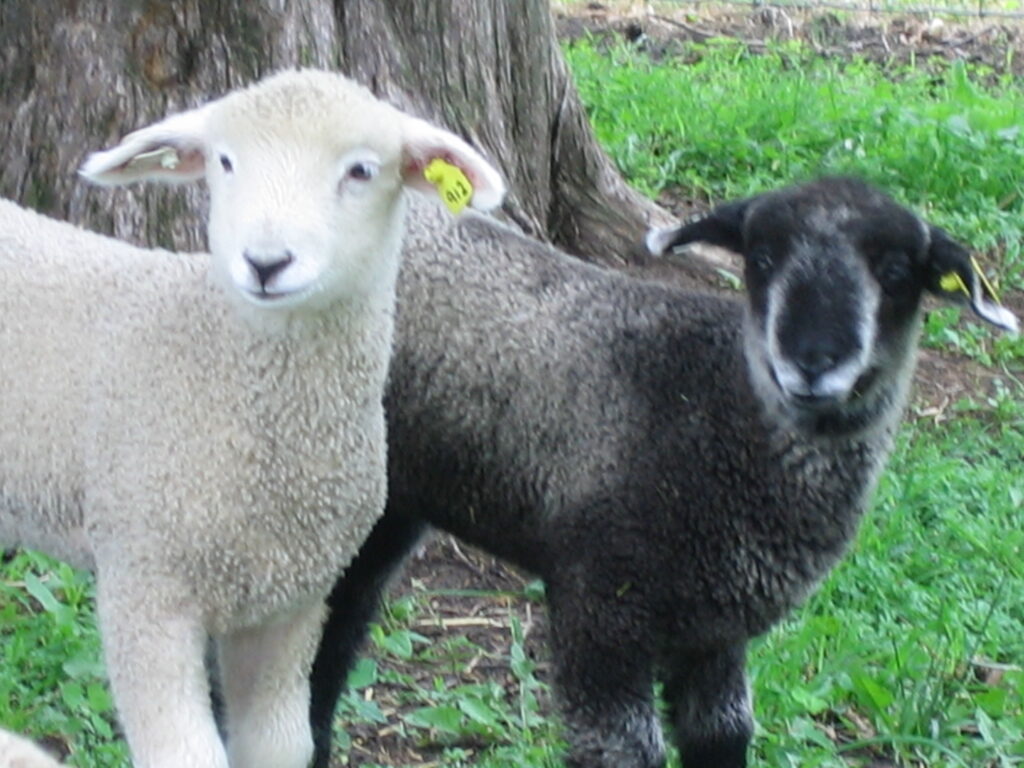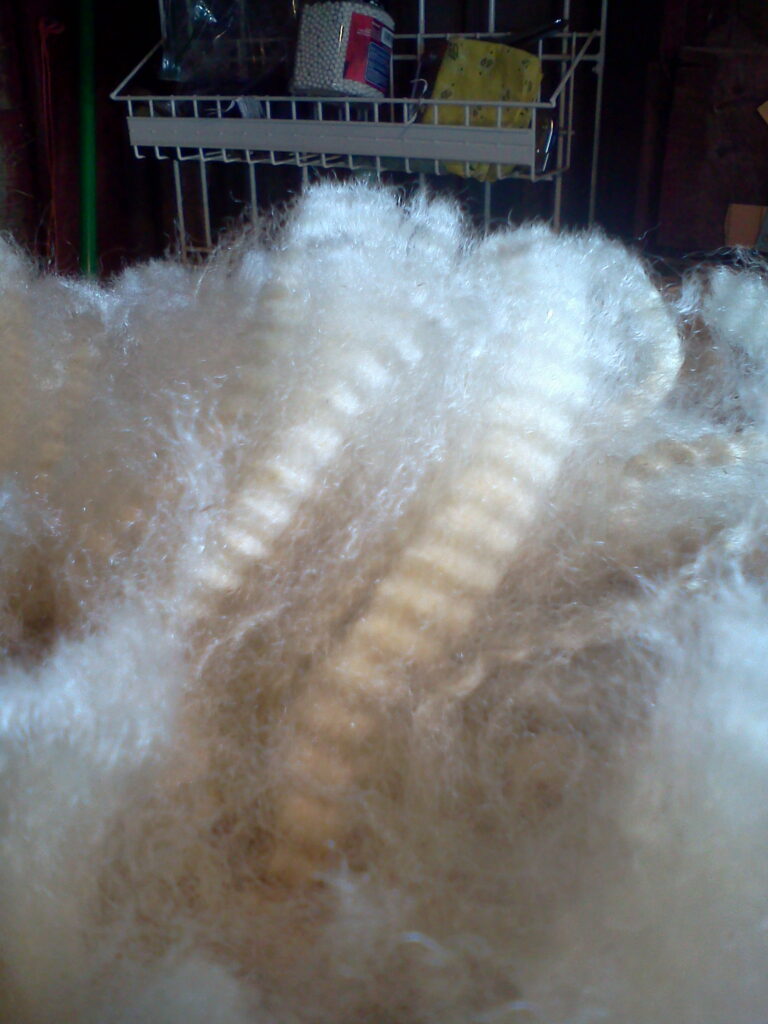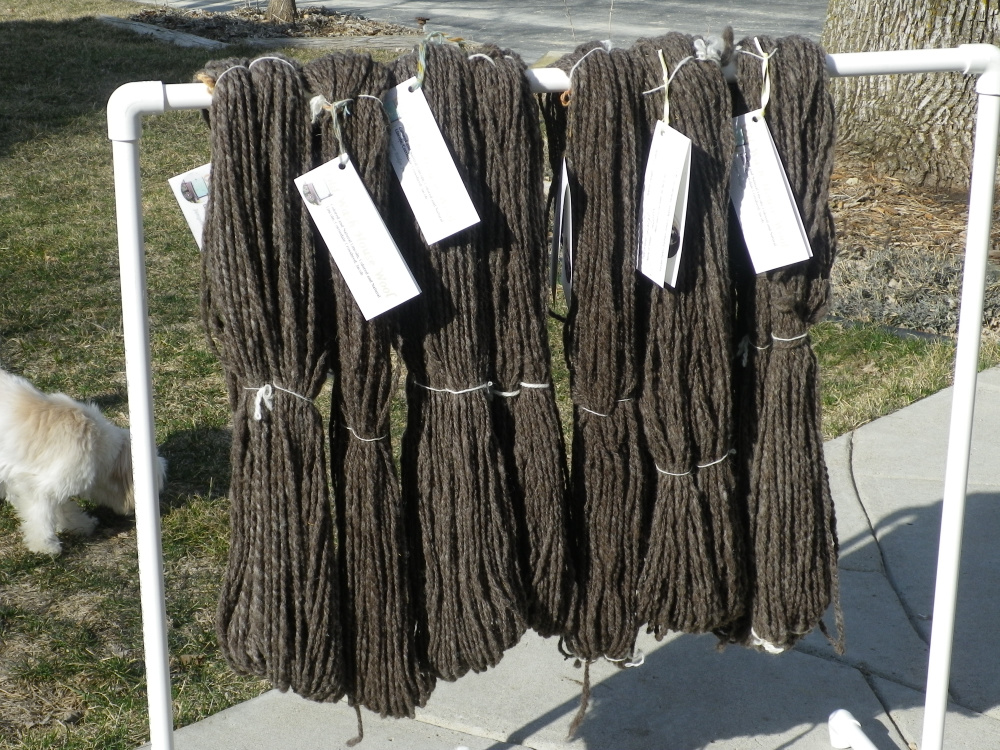I would like to thank Randall Parkin for being our guest blogger this month. The Parkin’s have been clients of Winterset Veterinary Center for a number of years and she graciously consented to helping me with our sheep blog. I hope you enjoy her pictures and words as much as I did. I have really learned a lot from the guest bloggers I had this year.
~ Dr. Lonna Nielsen
In 2003 we bought a farmstead complete with house, pastures, and a barn on 10 acres in Madison County. For the next Mother’s Day, my husband gave me a gift certificate for 2 sheep and a llama. At the Iowa State Fair that year, I met a Lincoln Longwool breeder, and was hooked. In September, we drove to their farm, and I picked out a Natural Lincoln (white) ewe and a Colored Lincoln (black/grey) ewe. On the way out of the sheep shed, another ewe put her front feet on a fence rail and demanded I pet her. She was a Corriedale, and I HAD to have her. Corriedales, like Lincolns, are generally friendly. I had found three sheep and no llama.
The llama was supposed to provide protection for the sheep, but we acquired three miniature horses instead, who performed well and were much more fun.
Most sheep producers in Iowa raise sheep for meat, or sheep to sell to 4-H and FFA youth for livestock projects. As a long-time knitter and very beginning spinner, I wanted the sheep for their wool. Most producers don’t want to deal with the wool, which only brings pennies per pound.
In contrast, my little spinning flock grew wool that when processed into yarn or sold as doll hair sold for $40 per pound. Even raw fleeces could bring $5-7 per pound. One of the main differences was that I kept the wool cleaner while the sheep grew it, kept it organized when it was shorn and removed the icky parts before the fleeces were packed in bags.
Lincoln sheep originated in Lincolnshire, England. I first chose Lincoln Longwool sheep because they were a people-oriented breed, and looked really cool. With wool that grows about an inch a month, I sheared them twice a year, in contrast to most breeds who are shorn once a year. Lincoln wool is lustrous and grows in curls – I found a market for the white wool in artists who make those fabulous Santa Claus figures with long white hair and beards. I washed that wool by hand and sold it to a doll hair wholesaler.
I named my first Lincolns Victoria (the white one) and Jasmine (the colored one).
Corriedale sheep are a Merino/Lincoln cross that originated in New Zealand and Australia. (Merino, or Spanish Merino, are believed to have originated in Spain, and produce a very fine wool.) My Corriedale ewe quickly became my favorite, and I named her Corinna. Corriedale wool became a favorite for spinning, and produced yarn that was comfortable even against bare skin. Corinna and I would sometimes just hang out watching the other sheep. I would sit on the barn threshold, and she would stand beside me and lean into me.
We ended up breeding our ewes by taking them to the farm where we got them, then the next year purchased a Lincoln ram from them. I named him Duke – since our address was Earlham, he was thus the “Duke of Earlham”.
Our first crops of lambs were born in January and February, which is common in Iowa sheep operations. Lambs sold for 4-H or FFA projects need to be of a certain size early in the project year. Winter is a miserable time of year to be traipsing up to the barn to monitor lambing, so I finally started breeding my ewes in November so they would lamb in a much more pleasant April!
Because our ram was a Lincoln, some of our lambs were Lincoln/Corriedale crossbreds, and they also produced really nice wool. It had some of the luster of Lincoln, and some of the characteristics of Corriedale wool – a finer wool, and the desirable crimp.
I started to spin on a wheel after I got the sheep, and though my wool crop got pretty out of hand after my flock became larger, I did have a great time making yarn to sell.
I was much more a dabbler in the business, though I know several women in Iowa who have made it a profitable endeavor. It didn’t take long to decide to send my wool to be processed into a form that was ready to spin, but I washed and carded my first few fleeces by hand. Victoria’s first fleece became a wonderful knitted afghan that I swear is like wearing a heating pad.
Eventually, I purchased a few Jacob sheep, and then some Babydoll Southdown. Jacob are an ancient breed with four horns and multicolored fleeces. Babydolls are a small version of the Southdown sheep, which originated in England.
There’s a fabulous web site that covers the topic of sheep beautifully: www.sheep101.info. According to information on that site, I learned there are over 1,000 breeds of sheep worldwide, and over 60 breeds here in the US.
We now live in Winterset, and our sheep days are in the past, but we are glad we got to experience raising sheep. My mom raised sheep when I was growing up, and I have always loved them, especially lambs. Having my own flock was a way to connect to my childhood.
